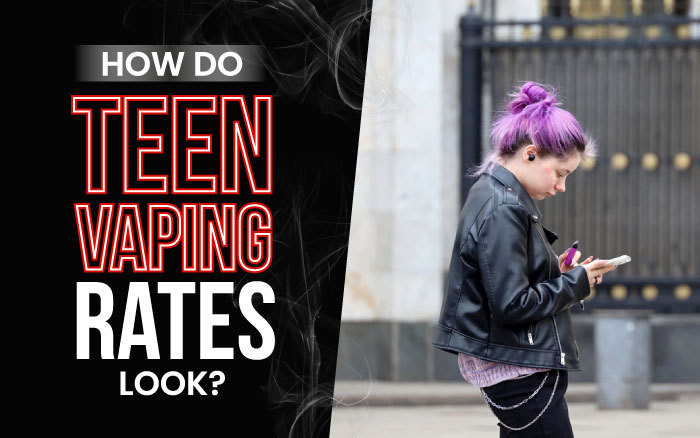How Do Teen Vaping Rates Look?
Estimated 0 min read
A recent study published in the scientific journal Addiction aimed at explaining the impact that the implementation of tobacco control policies has had on adolescent vaping on a worldwide scale.
The two main goals of the study were to estimate the prevalence of adolescent vaping in 47 lower-middle, upper-middle, and high-income countries, and to test the association between the implementation of the World Health Organization’s (WHO) tobacco control policies and teen vape use in 44 countries. The study was done using cross-sectional surveys with an initial sample of 151,960 adolescents around the world.
Results showed that 8.6% of the survey’s participants had vaped at least once in the past thirty days from the time the survey was done. The study took five different WHO policies to measure their impact on teen vaping: monitoring, a smoking-free environment, cessation programs, health warning, and advertising bans. Unfortunately, the association between adolescent vaping and the policies was inconclusive. But the study did find that a higher tax on combustible tobacco is usually associated with higher adolescent vaping rates.
While many of us are worried about a bad case of smoker’s cough and how to go about tobacco cessation, a.k.a. quitting smoking, it seems to be that most of the world, including regulating agencies, is worried about how to stop adolescents from vaping, regardless of what impact those rules could have on traditional smokers.
Underage vaping should be stopped and it is a goal that we fully support. It’s also one that needs to be carefully addressed and assessed in the most detailed way possible. Addressing the issue of underage vaping could have an indirect influence on other important health issues like teenage smoking statistics, the side effects of quitting smoking, cancer rates from smoking, and anything else overall related to smoking in society.
Unfortunately, we can’t say for sure what the impact would be, aside from a few studies that shine a light on the issue, but we can take a look at tobacco effects and vaping statistics to give us an idea of what the current scenario is with underage vaping.
U.S. Vaping Statistics
According to the annual national youth tobacco survey taken in November 2022 and displayed on the FDA’s official website, the following numbers are the current status of vaping and tobacco consumption in the U.S.
- 11.3% of 3.08 million middle and high school students reported the current use of any tobacco product in the past 30 days. This could be not only vaping products but vapes, cigarettes, cigars, chewing tobacco, and other tobacco-based products.
- 3.7% of 1 million students reported they are currently smoking tobacco.
- 3.5% of 960,000 students reported the current use of 2 or more tobacco products.
While we would like those numbers to be 0.0% in every aspect, the reality is that a goal like that is impossible.
According to the same survey, the most commonly used product among students was e-cigarettes at 9.4%. But all other products, cigars, cigarettes, smokeless tobacco, hookahs, nicotine pouches, heated tobacco products, and pipe tobacco, made up 8.6% of the use.
Is Vaping a Smoking Cessation Tool?
Smoking cessation has been a key topic when it comes to vaping. We can’t legally say that vaping is a smoking cessation tool or how effective it is due to a lack of substantial evidence. Anyone who has tried to quit smoking cold turkey knows how difficult it can be. Higher success rates associated with quitting tobacco are found when the process is gradual. There is more than a single way to quit smoking and most times good ol’ willpower is the main ingredient to a successful venture. But some people require help whether from others, total inaccessibility to tobacco products, or with the responsible use of a substitute.







